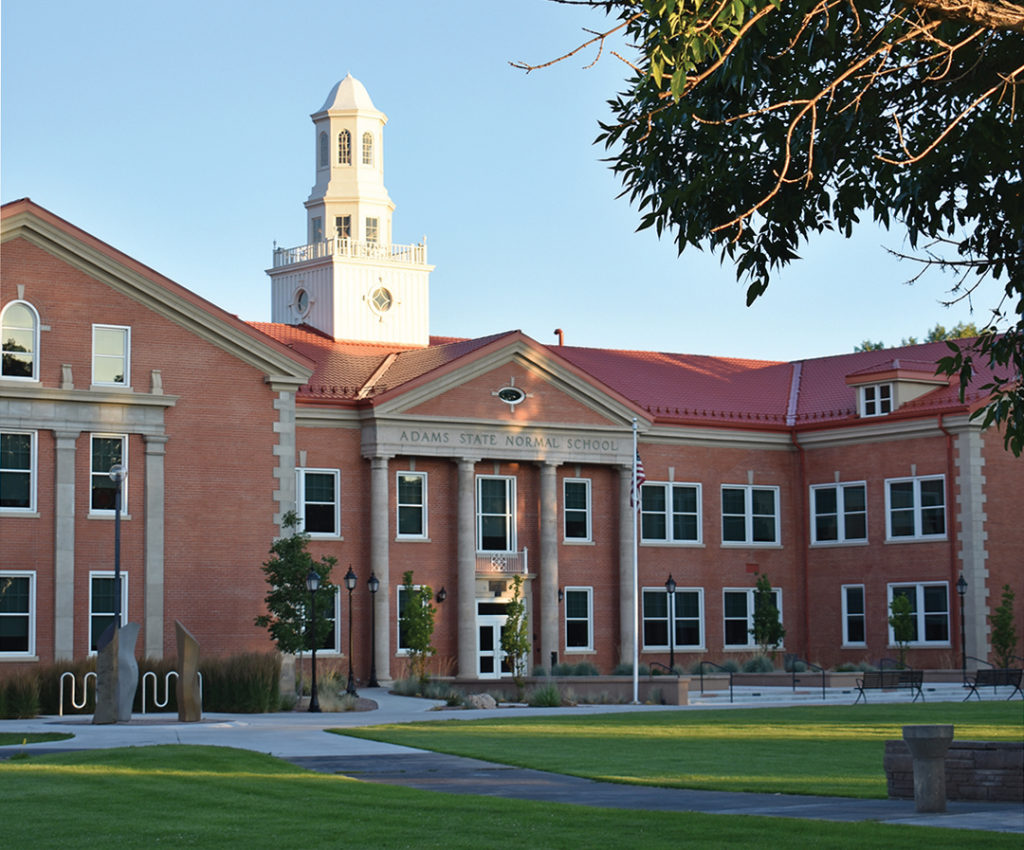ASU board reviews budget cuts

ALAMOSA — Adams State University Board of Trustees has $506,732 worth of non-personnel cuts to consider between now and April. The cuts, along with a series of recommended revenue-generating programs, will help the institution reach its $2.7 million net revenue goal.
Following a half-hour executive session involving an unspecified agreement that will be finalized later with ASU President Beverlee McClure, who is on leave and wasn’t present at Thursday’s special meeting, ASU Acting President Matt Nehring gave the board a sheet of line items for the group to potentially eliminate. Formal approval on the cuts will not be made until the board’s next meeting on April 5 and 6.
Over frequent meetings, a committee comprised of Athletic Director Larry Mortensen, Interim Vice President for Administration and Finance Kurt Cary, Vice President for Student Services Ken Marquez, Chief Financial Officer Heather Heersink, Human Resources Director Tracy Rogers and Nehring formed the recommendations using prioritization criteria that organized programs into sets of quintiles along with other reports and data.
"Those reports really give a good detail and help us understand which programs need more resources, which programs are not able to compete regardless of what resources," said Nehring. "Or maybe it's just time to sunset some programs."
Nehring first went over non-personnel components such as reconfiguring scholarships, shrinking general fund contributions to departments and downgrading sports programs.
ASU's adventure sports program, which includes NCAA varsity cycling and rock climbing teams, was proposed to be turned into club sports since it is not boosting enrollment. The program, with a $137,000 budget, would lose its full-time coordinator and continue to exist with a budget of $37,000.
"There were certain target numbers with respect to how many student athletes would be participating," Nehring said. "We're in about year six of that program and we have yet to actually reach those target numbers proposed with the original budget."
Meanwhile certain club sports will likely cease to exist unless they are self-funded. Both the rugby and men's volleyball clubs are on the chopping block and would save ASU $17,000.
"What we found is that they're not generating new students," Mortensen said.
The Milestone Scholarship program was suggested to be eliminated due to apparent abuse. It is a $500 scholarship awarded to students who complete their associate degree to incentivize students to stay.
"What we find are more and more students are coming to Adams with very few courses left to finish before they get their associate degree so it's not exactly a big incentive," Nehring said. "Furthermore, we also end up seeing a number of students who one semester before graduating with their bachelor's degree and they fill out the paperwork to be awarded an associate because they finished their general education, so they get a $500 scholarship."
Reducing the planetarium's discretionary funding—not their entire budget—by half saves $3,000. The general fund could also save $100,000 if individual departments fund graduate assistantships.
Reducing the frequency of drug testing, but still maintaining compliance for student athletes, equals $5,000 in savings.
"It's not mandated, but it's just a best practice we've adopted," Mortensen said, "particularly with legalizing marijuana in Colorado."
The largest piece of savings is $250,000 if the university reconfigures a portion of athletic scholarships into academic merit scholarships and room and board waivers.
"It does two things," said Nehring. "It still provides some scholarship support to those student athletes, but it also should increase the occupancy of our dorms here on campus."
Nehring also told the board how the university could increase revenue by creating new programs. Most revenue-generating ideas didn't have a dollar amount attached in case the program doesn’t get off the ground. New courses are also subject to the regular academic approval process.
"The revenue side is something we have to pay attention to longer term," said Nehring, "but that probably means a lot of that revenue will be realized after the first year or even the second or third year and we need to make sure we're also maintaining fiscal liability in the interim."
Increasing the football roster by 20 students and the wrestling roster by 12 was the first suggestion. It was also mentioned that the earth sciences program could enroll more students with a geographic information system program, which would require additional faculty.
"There is some cost associated with it," Nehring said. "I think we all want to recognize that it's important for the campus to seek out revenue generating opportunities and also keep in mind the old adage that to make money you're going to have to spend money."
Not wanting to completely abandon the adventure sports program, it could also be utilized for additional classes. For instance, outdoor leadership and other adventure-type academic programs could be tied into it.
Nehring also introduced the idea of restarting the currently paused Higher Education Administration and Leadership program, expanding the music education cohort to 20, and having more online courses such as psychology, sociology, mathematics and nursing. He also brought up starting a concurrent enrollment system where a student could receive both a bachelor's degree and a master's degree in five years.
"It's a pretty common program that you see at a number of universities around the state these days," said Nehring.
The confidential personnel items were discussed in an almost two-hour long executive session that was not open to the public. Other than the board formally recognizing that a reduction in force is necessary beyond a voluntary separation incentive plan, no cuts were approved. An exact dollar amount wasn’t provided, but budgetary savings with regards to staff reduction would make up the remaining $2.2 million needed.
"Take this home," ASU Board of Trustees Chair Cleave Simpson said, "absorb it and be prepared at the April 5 and 6 meeting to make a determination. We're not finalized by any stretch of the imagination and we still have work to do."



